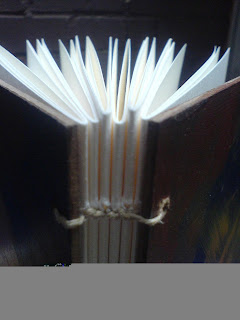 STEP ONE:
STEP ONE: Turkish Urn with oranges, 22x26, oil on linen
As mentioned in my original post about this painting, I discovered this Turkish Urn at a market several months ago. In particular, what inspired me to paint the urn was the lovely worn patina, its understated poise and grace, enhanced by the passage of time. With these thoughts firmly in mind, I placed the worn urn on my still life stand.
A still life concept can come together very quickly or it can take hours, even days, to accomplish. This particular concept did not come easy for me. Everything I loved about the urn seemed in contradiction to those objects placed on the table to enhance the beauty of it. Soon I realized that the utilitarian nature of the urn dictated not a still life of delicate objects at all. Simplicity was in order. No frills.
In keeping with the order of simplicity, this painting is built upon a limited palette of colour and non-colour. With the exception of the urn and the miniature cup, it is very much about earthy yellows, orange and green. The vivid orange colour also serves to complement the blues of the urn, emphasizing the delicate miniature cup with its blue painted windmill pattern (my tribute to Rembrandt).
As always, with my studio paintings, I began this painting on an oil primed linen which I'd previously toned using burnt umber and phthalo blue. I should add that I prepare all my surfaces myself. In this case, I've used raw Utrecht Belgian linen which I've prepared by hand - you can see a demo of this on this blog in an earlier post. In addition to the Utrecht, I use Fredrix "Kent", oil primed Belgian Linen and to this surface I add a coat of Williamsburg oil lead primer. The prepared linen is then stretched onto stretcher bars. Once a decision has been made as to the still life concept, I am able to choose a canvas which will best compliment it.
Stage One:
Using a large filbert bristle brush, I began by roughly blocking in the shadow patterns. At this
stage I don't worry about drawing, my aim is to place the objects in the 'space' on the canvas and to develop the design using the shadow structure.
This photo shows the painting a little further along in the initial stages. I've not only blocked in the basic shadow design/concept using my large brush and burnt umber/blue mixture, I've also blocked in the objects with some colour, mainly just to get paint on them. It's always difficult (for me, at least) to get paint coverage on this oil primed linen, in this initial stage, so I'm just concentrating on stating the colour scheme and getting that first coat of paint on. This allows me to make some judgement calls and also make any changes that I might deem necessary, too. I've managed to get a little further along in blocking in the urn. Since this is the largest object in the painting, and pretty much the star of the show, I want to get a feel for the size and value, and just how it fills the space on its own. So far I feel that it's holding its own...no need to haul in a bunch of flowers for support, just yet!
The important thing to note at this stage is that I'm not worried about drawing or detail, I'm using a large bristle brush and just getting a feel for the design - the flow of the light and how it will travel across my canvas. The paint is applied with little concern for smoothness. In fact, I love the quality of the scratchy surface caused by my bristle brush and will try to utilize this wherever I am able, as I go along. I've used my palette knife on the table edge. You'll also note that I have blocked in the basic value of the table top, as well.
...on to Step Two
 Recently I had the pleasure of meeting a young, self described 'budding, self-taught artist who was born and raised in Calgary" by the name of Trevor Gieske.
Recently I had the pleasure of meeting a young, self described 'budding, self-taught artist who was born and raised in Calgary" by the name of Trevor Gieske. Trevor makes hand bound sketch books, often collaborating with another artist in his thoughtful creations. He showed me a beautifully crafted journal he'd made for a Calgary illustrator. On the cover was a stunning illustration by the artist who'd commissioned Trevor to make the journal for her. It contained rag papers that any artist would long to make their mark on. This journal was artfully bound by hand, by Trevor. It was truly remarkable and breathtaking.
Trevor makes hand bound sketch books, often collaborating with another artist in his thoughtful creations. He showed me a beautifully crafted journal he'd made for a Calgary illustrator. On the cover was a stunning illustration by the artist who'd commissioned Trevor to make the journal for her. It contained rag papers that any artist would long to make their mark on. This journal was artfully bound by hand, by Trevor. It was truly remarkable and breathtaking.







